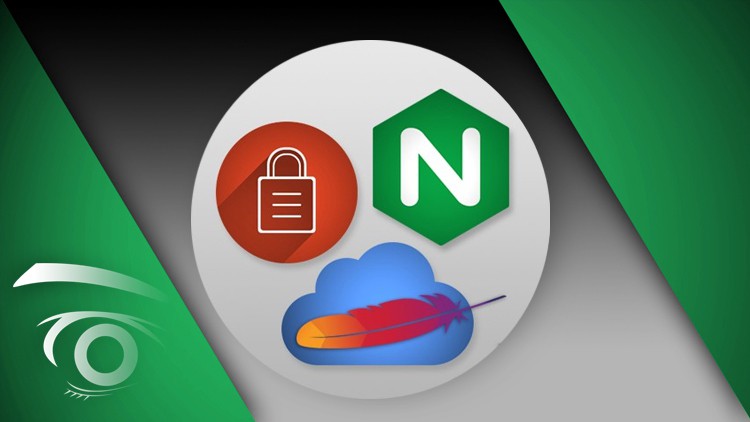
Install, Configure, and Secure NGINX & Apache on an Ubuntu Server using Digital Ocean & Let’s Encrypt SSL
What you will learn
Deploying a virtual server on Digital Ocean
Working with dynamic, static and floating IPs
Using Terminal for remote authentication
Installing and configuring LAMP Stack on Ubuntu 18.04
Testing PHP
Hosting Multiple Domains on one Apache Virtual Server
Configuring Virtual Host Files and Directives
DNS Zone File Configuration
Understanding the difference between Apache & NGINX
Installing NGINX on a Digital Ocean Droplet or any Virtual Server of your choice
Modifying the NGINX Block Configuration file for hosting Websites
Installing essential components on NGINX such as MySQL, PHP & PhpMyAdmin
Securing PhpMyAdmin using symbolic links and NGINX’s built in authentication gateway
Securing your hosted websites with free SSL using Certbot & Let’s Encrypt
Installing and Configuring WordPress on your NGINX Server
Types of SSL Certificates
How SSL Certificates Work
SSL Certificate Status Reports
Redirect all Domain Variations to HTTPS
Description
Welcome to our latest course, which will guide you through the process of installing, securing, and configuring NGINX or Apache on an Ubuntu web server. You will also learn to encrypt all web traffic, using a Free SSL certificate from Let’s Encrypt.
APACHE Section:
This course begins with exploring the most widely used web server technology available, Apache. Statistics show that Apache is used to run over 65% of all web servers around the world. Understanding how to work with Apache, is an instrumental part of the web development process. Students will learn the following key concepts:
- Deploying a virtual server on Digital Ocean
- Working with dynamic, static and floating IPs
- Using Terminal for remote authentication
- Installing and configuring LAMP Stack on Ubuntu 18.04
- Testing PHP
- Hosting Multiple Domains on one Apache Virtual Server
- Configuring Virtual Host Files and Directives
- DNS Zone File Configuration
NGINX Section:
NGINX is now considered the most powerful, efficient, and secure web server technology used to host web applications of all sizes and complexity. The software is open-source, and is designed for maximum performance and stability. It also aims to correct many of the short-falls of Apache, when it comes to delivering content to your end user. NGINX can be used for web serving, reverse proxying, caching, load balancing, media streaming, and much more.
The NGINX Section of this course will help you understand the following key concepts:
- Understanding the difference between Apache & NGINX
- Installing NGINX on a Digital Ocean Droplet or any Virtual Server of your choice.
- Modifying the NGINX Block Configuration file for hosting Websites
- Installing essential components on NGINX such as MySQL, PHP & PhpMyAdmin
- Securing PhpMyAdmin using symbolic links and NGINX’s built in authentication gateway.
- Securing your hosted websites with free SSL using Certbot & Let’s Encrypt
- Installing and Configuring WordPress on your NGINX Server
SSL Certificates – Let’s Encrypt
This section of the course offers an in-depth look into the role of SSL certificates when it comes to server security and web traffic encryption. We start with a thorough introduction which includes exploring different types of certificates and how they work. From there, students create a droplet on Digital Ocean and configure their own free SSL certificate using Let’s Encrypt Certificate Authority. This section of the course combines theoretical and hands-on training. Students have the opportunity to practice some of the concepts explored in the previous two sections, while also learning about free SSL Certificates, such as Let’s Encrypt.
Content
Apache Web Server Configuration
NGINX Web Server Configuration
Bonus: SSL Certificates Explored + Practice Project